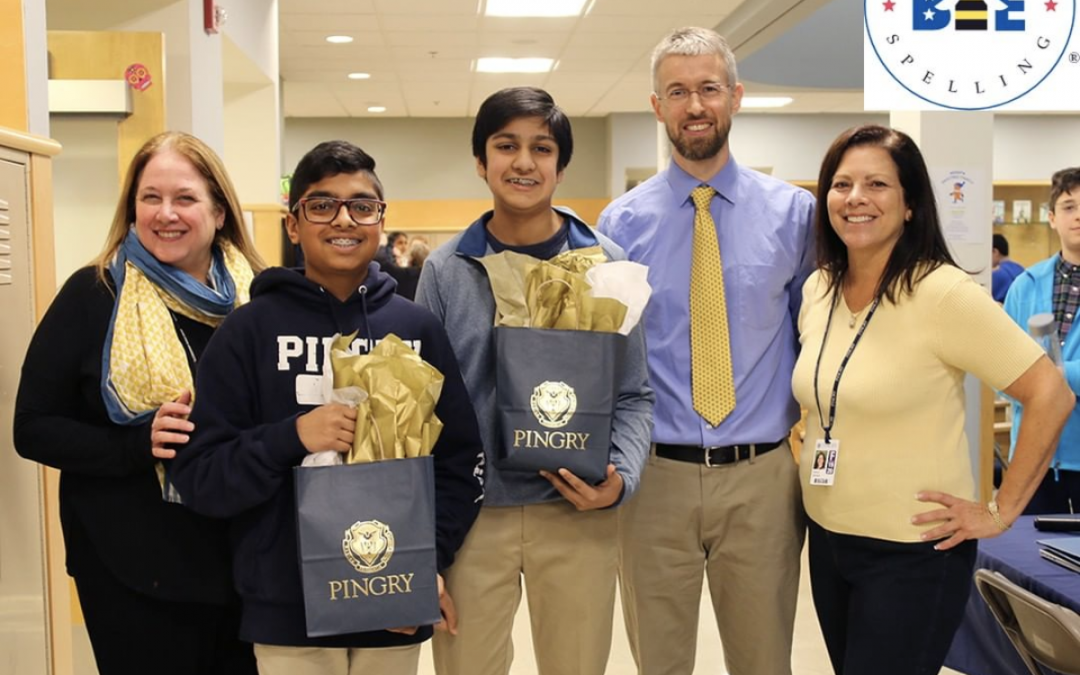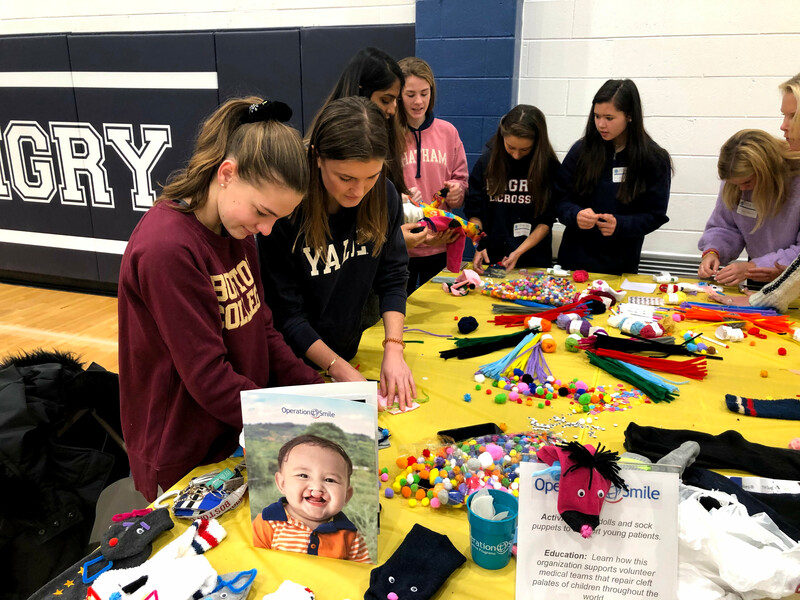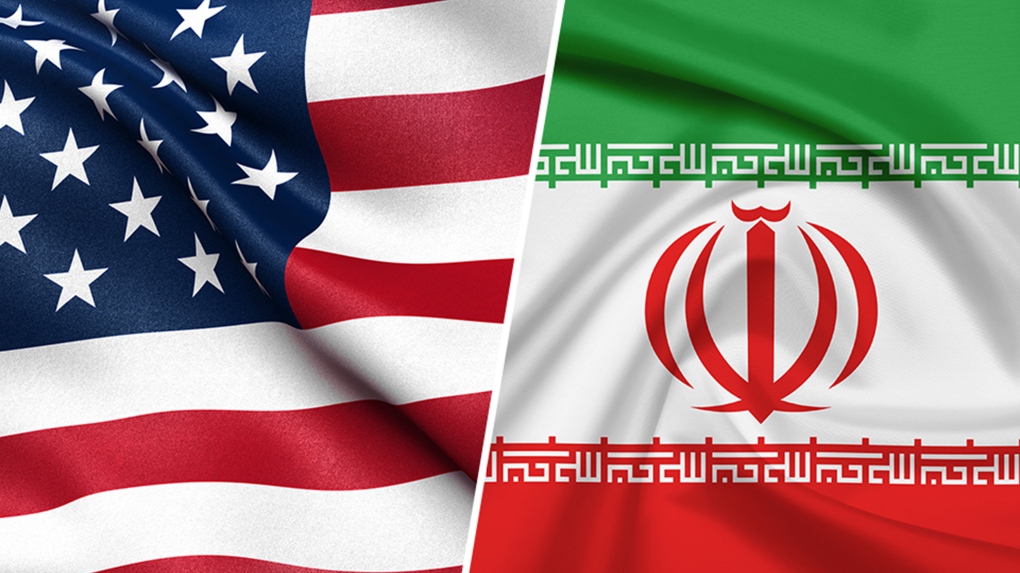
Feb 26, 2020 | School News
By Alex Wong (I)
On December 20 and January 10, the Middle School held its annual Geography Bee, Talent Show, and Spelling Bee. These events featured performances by various students in the Middle School, showcasing academic, musical, speaking, and spelling skills.
The Geography Bee was held on December 20, with 24 contestants participating (eight from each grade level). It featured both a written and oral round. Questions included questions relating to territories such as Ascension Island to natural phenomenons such as avalanches. Eventually, the field of 24 was narrowed down to two contestants, Dhruv Nagarajan (I) and Alex Wong (I), with Dhruv ultimately winning on the fifth question of the Championship round. He will now advance to the state tournament in March.
Directly after the Geography Bee, the Middle School hosted the Third Annual Talent Show. For the first time in three years, all students who auditioned for the show were accepted. Performances ranged from rapping to poetry to various musical performances. The crowd showed great enthusiasm for the various performances, such as playing the violin while hula hooping.
The Fourth Annual Spelling Bee (a Pingry tradition started by student Noah Bergam (V) in 2017) was held on January 10. Each grade had ten preliminary round winners, so there were 30 contestants. The Spelling Bee featured both vocabulary and spelling rounds. Nick Henry (I) remarked, “It was fun to participate in the Spelling Bee, since it was the first time I was involved in it.” Words in the Spelling Bee included “lightning,” “Sinai,” “artillery,” and many others. Ultimately, with a field narrowed down to two contestants, Dhruv Nagarajan (I) and Vinav Shah (I) remained. Vinav won the Bee with the word “austere.” He will now advance to the state round of the Spelling Bee in April.
The Middle School ended 2019 and started 2020 with impressive displays of student skill. All of the middle schoolers had a great time watching their peers participate in the three events. The enthusiasm that every middle schooler displayed for their fellow students was amazing.

Feb 26, 2020 | School News
By Brian Li (IV)
On Monday, January 21, Pingry hosted its eighth annual Dr. Martin Luther King Jr. Day of Service. In the morning, students, family members, and faculty volunteered for various organizations, including Cancer Support Community, The Sharing Network, and Color a Smile. In 2012, 50 families volunteered during the first MLK Day of Service; this year, over 200 members of the Pingry community participated. Ms. Shelley Hartz, Director of Community & Civic Engagement, created the event after hearing the slogan, “Martin Luther King Day: A day on, not a day off.” She spoke with members of the Pingry School Parents Association (PSPA) and put together a day where “we [invite] other community organizations and provide opportunities for our community to do service for these organizations.” Ms. Hartz also decided to include an informative aspect on “Martin Luther King, social change, and civil rights.” The MLK Day of Service provides the community with a chance to give back and contribute to society. To Ms. Hartz, the best part of the day was seeing students volunteer. “It is very heartening to me when students choose to participate instead of sleeping late. [I am] able to step back and see them having fun while they’re helping another organization.”

Feb 26, 2020 | Athletics, School News
By Hugh Zhang (V)
Following successful seasons across the board last winter, Pingry boys’ athletics have raised the bar even higher this year. Outstanding accomplishments from all teams continue to demonstrate Big Blue’s athletic excellence, and Pingry is poised to finish strong this season. Here is a look at some of the most memorable highlights so far.
Coming into the season, Matt Fallon boasted several records on his résumé. Only a junior, Matt is already one of the best swimmers in the country, and this winter he added a few more achievements to his list. Against North Hunterdon, Fallon broke the national independent short course records for the 200 meter IM and 100 meter breaststroke. He also claimed the meet record for the 100 yard breaststroke at Lawrenceville. Regarding these successes, Fallon commented, “The hard work during practice definitely paid off, and I couldn’t have done it without the team.”
Armed with one of Pingry’s best lineups in recent memory, the powerhouse boys’ swimming team, led by seniors Reid McBoyle (VI) and Will Stearns (VI), swept both the Skyland Conference and Prep Championships, and won its 13th consecutive state title, breaking the state record for the most state titles won back to back in a 98-72 win over Bishop Eustace. Upon winning the state title, captain Reid McBoyle remarked “After seeing the other captains in years past win the state title, it’s been an important ritual for us to come here, do well and win. And this year if feels really good because we finally broke that record. It’s awesome that we got to go through the program and become the first team to beat that record.”
The boys’ winter track team is also having a terrific season; as Captain Henry Wood (V) remarks, “we are consistently dropping PRs each race.” The team put up impressive results at the Prep Championships, with James Draper (VI) coming in fifth for shotput and Wood winning the 1600 meter run. Wood also broke the 1000 meter school record at the New Balance games and placed second in the 800 meter at the Skyland Conference Championships.
Pingry has dominated the ice as well, with the boys’ ice hockey team heading into the state tournament as number one seed. Juniors Eric Bush and Jared Kordonsky both hit the 100 point mark this season, and the team has secured multiple victories, including a recent win against The Hun School. Overall, it has undeniably been a “solid season,” according to hockey captain James Cummings (VI).

Feb 26, 2020 | Arts, Faculty + Staff, School News
By Martine Bigos (IV)
The annual Art Faculty Exhibition was on display in the Hostetter Gallery through January 31. The exhibition featured the work of many Pingry studio art teachers, including Ms. Xiomara Babilonia, Ms. Melody Boone, Mr. Miles Boyd, Mr. Russell Christian, Ms. Rebecca Sullivan, Mr. Rich Freiwald, Ms. Patti Jordan, and Ms. Nan Ring.
Last year, the faculty exhibit, entitled “Now and Then,” explored the teacher’s artistic evolutions. By comparing their older pieces to new creations, viewers were able to see the growth and development of the teachers’ styles. Once again, this year’s exhibit displayed the faculty’s creativity and talent. On Wednesday, January 29, Pingry students and faculty were invited to a reception that celebrated the exhibit. While enjoying snacks, visitors explored the various pieces and appreciated the beautiful artwork.
Among the pieces on display was Ms. Nan Ring’s “Veiled Figures” series. Throughout the series, she explores “the way we fit in—or not—to our bodies, our clothes, our culture, and the planet.” When searching for inspiration, Ms. Ring was drawn to a veil’s “myriad folds and geometric patterns formed by the way the gauzy material overlaps itself as it is draped on the wearer.” She’s hopes that her “paintings evolve for viewers as the viewer evolves” and that they “mean different things to the viewer at different times of their life, just like a poem does for a reader.” In her paintings, Ms. Ring showcased the beauty and complexity of veils, as she explored the versatility of them.
Next up in the gallery is the 24th annual Student Photography Show, which will be showing in the gallery until March 3. The show features the works of students from eleven different private and public schools across the region. Both exhibits, back-to-back, put the talent and creativity of the faculty, and the students they help mentor, on display for the whole community.
Feb 26, 2020 | Music
By Rhea Kapur (IV)
In preparation for Snowball, Pingry’s annual winter formal, there are a couple items to consider. One is, of course, the look. For female students, it’s finding the perfect dress—classically beautiful, yet original—and for the gentlemen, a suit that stands out. Refer to this issue’s fashion column for more! Other items that come to mind include finding a date, perhaps, a group of friends to get ready with, and everything in between. In all the mayhem that ensues in the week leading up to the event, many don’t stop and think about the music. Out of sight, out of mind—until the event starts. There, it’s, “Ugh, what are the words to this again? Let’s go get a drink and wait ‘till something we know comes on.” The cycle repeats itself every year. The real fun at Snowball—or any dance, for that matter—is to vibe with your friends and just enjoy the music. Many upperclassmen I’ve talked to agree: at a dance, we enjoy the music to the fullest when, first of all, we like the songs, and even more importantly, we know the songs– the chorus, when the beat drops, and a cool freestyle that matches. And let’s be real here: a lot of the time, that isn’t the case.
To investigate this further, I reflected on exactly what type of music is played at Snowball. A friend on Student Government sent me the suggested playlist, which is curated by members of the group and sent to the Snowball DJ. Looking at it, we see that the songs mainly fall into two categories: hip-hop and iconic bops. The latter is self explanatory: the likes of Ed Sheeran’s “Thinking Out Loud,” The Killers’ “Mr. Brightside,” and John Legend’s “All of Me” are commonplace. These are songs that we’ve grown up listening to on the radio, the kinds of songs that friends scream out loud together, smiling, arm in arm—the songs that bring us teenagers together. These fall under the wider umbrella of “pop,” and they’re perfect for a close-knit, school-wide dance. An observation, though, if I may—at Snowball, it’s mainly the female students who dance to these songs, while the males stand on the side awkwardly. Maybe it’s because the lyrics are more touchy-feely, and that, even though male students know the words, singing along goes against the “masculine” image that they must project. Or, maybe this music just isn’t as popular among male students—but I digress.
The roles quickly reverse, though, when songs from the former category—hip-hop—come on. These are characterized by rhythmic beatboxing and clean beats accompanied by raw, flowing rap lyrics. The most popular of them—Drake’s “One Dance,” Travis Scott’s “HIGHEST IN THE ROOM”—are decently well known to all genders and bring most people out to the dance floor. However, when just slightly less popular songs come on—Lil Uzi Vert’s “That’s a Rack,” Migos’ “Narcos”—it’s the male students that jump up and crowd around the middle of the dance floor, enjoying the beat and shouting the lyrics, while female students step back.
Does this mean that the music tastes of our generation, our age group, also split into these two strict categories—and that the gender interests do as well? I would disagree. Take a look at recent breakout stars like Lil Nas X or Billie Eilish, for example. Lil Nas X’s “Old Town Road,” a smashing hit, combines a country sound with the classic hip-hop beat. Both sounds are prominent, and by putting them together, Lil Nas X becomes original, a pioneer, and instantly popular. Eilish’s sound is also definitive, original; she specializes in horror pop, with tunes that are uncannily catchy but also creepy and spine-tingling, and even have a bit of the hip-hop influence mixed in with the beat. As such, Eilish’s music has an entirely different, captivating sound, unlike anything that has been heard before. Both artists have a fantastic following with teenagers of all genders and backgrounds, including Pingry’s own—both artists are on the Snowball playlist and stirred the entire crowd to their feet when played. They’ve blurred the lines between the different genres. I believe this is also reflective of the world our generation is growing up in as a whole: we’re more accepting, more fluid, more willing to combine different aspects of what is known to create what is not. Although there may not be as many artists like Lil Nas X and Eilish out there just yet, with the same degree of popularity, I think that’s the direction we’re going in. Soon, popular music will be more obviously made up of more than just two sounds. Just imagine what the dynamics at Snowball will be like when that’s the case.
Feb 26, 2020 | School News
By Sarah Kloss (IV)
This past winter, many students were disappointed to hear that the Student Activities Committee’s (SAC) annual Holiday Assembly was cancelled. The assembly is a beloved (and entertaining) Pingry tradition, and many were surprised and confused as to why it would not be running. This resulted in a number of rumors and speculations about the cause for cancellation, but, according to Upper School Director Dean Chatterji, the real reason was the timing of the assembly. During the month of December, the school was dealing with a bout of poor decisions made online, which had impacted other members of the Pingry community. Dean Chatterji said, “Our highest concern is that the people in the community know that they are cared about, and during that time, people did not feel comfortable or cared about. We as a community could not be making fun of each other. We did not want people to be targets of public humor.”
Therefore, on the night before it was to take place, the assembly was cancelled. This upset many students, including the leaders of SAC. According to Dean Chatterji, the content of the assembly had no impact on the cancellation, and SAC was ready to present their hard work to the school. Ola Weber (VI), a leader of SAC, explained that she didn’t think it was handled in the best way, as she was told the night before the assembly. By that time, they had pulled several all nighters to be fully prepared with a finished master script. She believes that the school could have been more proactive in alerting the student leaders well before then. When asked about what the future of SAC looks like, Weber responded with “It’s concerning, we have to be really careful with our future content. We are not going to be able to make any jokes because we are afraid it will hurt people’s feelings. But the point of SAC is to make people laugh.”
In regards to the holiday assembly, the content will be scrapped because it was mostly holiday focused. Even so, the club is pushing onwards and beginning to prepare for their next performance, which will be the spring assembly. Hopefully, SAC will remain an important part of the Pingry community because of the joy and humor it brings to the student body.

Feb 25, 2020 | Eva Schiller, Meghan Durkin, School News
By Vicky Gu (VI), Meghan Durkin (V), and Eva Schiller (V)
On Friday, January 31, Form V and VI students attended Pingry’s annual Career Day, in which they were able to interact with a wide variety of Pingry alumni and gain insight into future career options.
The event began with a keynote presentation by Dr. Jennifer Weiss ‘89, who spoke to students about her unique position as one of the few women who specializes in orthopedic surgery. After the keynote, students dispersed and were able to attend three career panels––two chosen before the event, and one that the student could decide that morning. Each panel was led by two or three Pingry alumni involved in a specific career––among the careers featured were law, media and communications, and medicine. Students had the opportunity to ask the alumni questions about their education, career paths, and projects, as well as general life questions.
At the end of the school day, after speaking about her profession, talking to students, and participating in numerous panels, Dr. Weiss was interviewed by the Pingry Record Staff. The following are excerpts from our conversation.
How did Pingry prepare you for the world of orthopedic surgery and sports medicine?
I found Pingry to be more rigorous than college and medical school. My teachers [Mr. Lavalette, Mr. Grant] took an interest in where I thought my limits were, and pushed me past my limits. It is a place where I went from being a shy rule-follower to being proud.
How did you become interested in orthopedic surgery/sports medicine?
My dad was an orthopedic surgeon. Then, I had a funny route: as I got older, my dad was really excited about me being an orthopedic surgeon, so I got really unexcited about being an orthopedic surgeon. But, when I did my orthopedic rotation, I fell in love with it.
What attracted you to a male-dominated specialty?
I was very comfortable with a group of my friends who were boys from a very early age. I believe that I grew up in a bantering environment, so when I came into the world of orthopedics, not as my father’s daughter, but as a medical student, I was comfortable with the way people spoke to each other. I fell in love with it socially.
What do you think was the most challenging part in your entire career path?
It was my second year of being a resident. The newness had worn off. It’s like when you’re going on a long run, the middle miles are the most tiring. The second year, I thought, is this ever going to be over? The fatigue set in mentally and physically.
What is the biggest challenge you face on a day-to-day basis?
I struggle with maintaining perspective of how privileged I am to have a healthy family, to have a job that I love, and that I can send my kids to a good school. I still get lost in the weeds because I want everything to be better and more perfect.
How have you balanced your family life with your professional life? What was it like when you first had children?
I like the phrase work-life integration. I brought my kids with me today, and I will try to bring one of my three kids to each meeting with me. My son mountain bikes with me. Lila will do her homework, and I’ll be in the room on my computer next to her.
What would you like to tell the greater Pingry community?
I want the people in this community to know how the Pingry family and the alumni network is extensive. People are open with their time and hearts through this connection. It’s gonna be there for you.

Feb 25, 2020 | Editorial, Meghan Durkin, Opinion
By Meghan Durkin (V)
It’s February 1979. The phone rings. The clock reads 3 a.m. as my grandfather holds it up to his ear. It’s 11:30 a.m. in Iran, where the Shah, Mohammad Raza Pahlavi, had fled in response to insurgency a month earlier. At the time, my grandfather was working for American Bell International, an AT&T subsidiary tasked with facilitating the improvement of telephone and communication systems in Iran. However, with the overthrow of Pahlavi and the rise of Ayatollah Khomeini, AT&T’s project ceased. Over the next few weeks, my grandfather, who handled insurance for the company, worked to repossess valuables left by AT&T employees, who were forced to leave their apartments in Iran following the fall of the Shah. After finding where workers had left clothing, jewelry, pets, and more, my grandfather transferred that information to employees still in Iran, in hopes of reclaiming their belongings.
Prior to the winter of 1979, during the height of AT&T’s project in Iran, U.S. relations with the country were bolstered. The pro-Western policies of Pahlavi fit American economic interests, specifically in regards to the oil industry. However, to many Iranians, the Shah’s policies felt repressive and tyrannical. The “White Revolution,” a number of reforms established by Pahlavi in the early 1960s, implemented land redistribution, and the expansion of women’s rights. These policies were quickly met with popular dissent, as the poor found little relief. By the end of the Shah’s reign, the U.S. appeared to support a leader unpopular with his own people. Once Pahlavi fled, his favorable relations with the U.S. seemed to continue, much to the resentment of Iranians. U.S. President Jimmy Carter went so far as to allow Pahlavi into the U.S. to receive cancer treatment.
In November of 1979, in retaliation for Carter’s action, Iranian students took 66 Americans hostage at the U.S Embassy in the Iranian capital of Tehran. The crisis, which lasted 344 days but ultimately ended in the safe return of the hostages, began a long history of strained relations between the U.S. and Iran.
These historic tensions were in the spotlight this January, when President Trump ordered an airstrike that killed Iranian general Qasem Soleimani. After the strike, Trump threatened to carry out further attacks. On Twitter, he referred back to the 1979 crisis, noting that the 52 Iranian sites that had been identified as targets represented “the 52 American hostages taken by Iran many years ago.” Many Iranians, who considered Soleimani a hero, were quick to declare revenge and violence against the U.S. However, President Trump and his administration have continued to justify the act as a preemptive attack against a supposed plan of Soleimani to strike a U.S. embassy.
Over 40 years after the overthrow of the Shah and the consequent American hostage crisis, U.S.-Iran relations seem rockier than ever. Under President Obama in 2013, the countries attempted reconciliation through the Iran Nuclear Deal, which outlined that Iran would restrict their nuclear activities. In 2018, however, President Trump abandoned the plan, and the two countries have faced growing tension and subsequent violence over the past few years. Now, after Soleimani’s death, there seems to be no end in sight.
Thus, the question remains: is compromise between the U.S. and Iran possible? Is an amicable relationship on the horizon, or will we continue towards aggression and animosity? To me, the two countries have grown too divisive to ever find a real compromise, and the U.S. does not have a compelling reason to concede to the Iranian government. When President George W. Bush coined Iran one-third of the “axis of evil,” it was clear the United States viewed the country’s regime as radical and dangerous; the government has been accused of supporting terrorism and seeking to bolster weapons of mass destruction. Thus, our government doesn’t owe the Iranian government diplomacy, but it does have a responsibility to support the Iranian people. As a result of economic sanctions placed on Iran in 2018, its people have faced an economic recession, rising prices, and stagnant economic growth. As innocent people suffer, the U.S. government seeks to break a regime, without thinking of the consequences for the average citizen. So, while I believe I will never see a time like my grandfather’s, where the United States and Iran came together for economic gain, I do believe it’s possible for our government to protect itself against Iranian threats while still treating the Iranian people humanely.






